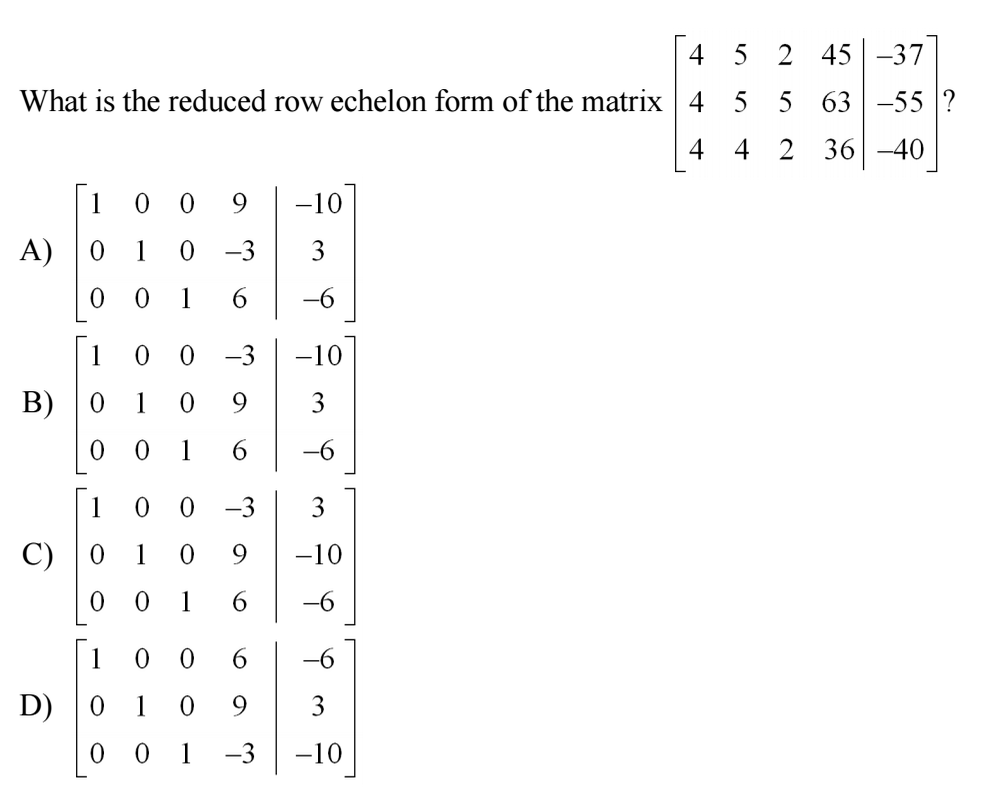Matrices, ubiquitous in mathematics, are often encountered in real-world applications. Whether it’s solving systems of equations, analyzing data, or understanding transformations, understanding how to manipulate matrices is crucial. Among the most fundamental techniques is reducing matrices to row echelon form, a simplified version that unlocks numerous benefits.

Image: www.hierarchystructure.com
**Introduction to Row Echelon Form**
In linear algebra, a matrix in row echelon form possesses unique characteristics. Each row contains a leading entry, which is the first non-zero entry from the left and is positioned one column to the right of the leading entry in the preceding row. Additionally, all the entries below the leading entry in any column are zero. This organized structure makes row echelon form exceptionally convenient for various operations.
**Steps to Reduce a Matrix to Row Echelon Form**
Transforming a matrix into row echelon form involves a series of elementary row operations:
– Swapping rows: Interchanging two rows to enable subsequent operations.
– Multiplying a row by a nonzero scalar: Increasing or decreasing all values in a row by the same nonzero factor, which allows for leading entries to be created or to be 1.
– Adding multiples of a row to another row: Adding a multiple of one row to another, ensuring that the coefficients above or below the leading entry become zero.
By repeatedly applying these operations, systematically, a matrix can be transformed into row echelon form.
**Benefits of Row Echelon Form**
Row echelon form offers several advantages that make it invaluable in numerous applications:
– Determining rank: By examining the row echelon form, the rank of a matrix can be easily identified.
– Solving systems of equations: Matrices transformed into row echelon form allow for the direct solution of systems of equations, simplifying the process.
– Finding determinants: The determinant of a square matrix can be determined quickly using row echelon form.
– Checking for linear independence: Row echelon form enables the immediate verification of linear independence among vectors.
These benefits underscore the significance of row echelon form in linear algebra and its various applications.
Image: www.coursehero.com
**Tips for Efficient Use of Row Echelon Form**
Mastering row echelon form enhances a mathematician’s or student’s problem-solving abilities. Here are several expert tips to optimize the process:
– Start with the simplest entries: Focus on creating leading entries from the leftmost column as early as possible.
– Use zeroes wisely: By adding multiples of rows to zero out coefficients below and above leading entries, the matrix becomes easier to manipulate.
– Don’t overcomplicate: Avoid unnecessary row operations that could introduce errors or complicate the process.
By following these tips, individuals can streamline their matrix manipulations, reducing both time and errors.
**FAQs on Row Echelon Form**
For a deeper understanding of row echelon form, here are some frequently asked questions:
– Q: Is row echelon form unique?
– A: Yes, for a given matrix, the row echelon form is unique.
– Q: How can matrix transformations be viewed using row echelon form?
– A: Row echelon form can visualize the effects of linear transformations as a combination of elementary row operations.
– Q: Can any matrix be reduced to row echelon form?
– A: Yes, any matrix can be transformed into row echelon form using elementary row operations.
How To Reduce To Row Echelon Form
**Conclusion**
Mastering row echelon form is essential for comprehending linear algebra and its applications. By unraveling the intricacies of reducing matrices to row echelon form, individuals empower themselves with a technique that simplifies complex operations, solves equations efficiently, and unlocks numerous analytical possibilities.
If you’re keen on delving deeper into the world of matrices and linear transformations, I highly recommend you explore further resources on row echelon form. By doing so, you’ll not only enhance your mathematical prowess but also appreciate the elegance of this fundamental concept.


/GettyImages-1303637-two-way-mirror-57126b585f9b588cc2ed8a7b-5b8ef296c9e77c0050809a9a.jpg?w=740&resize=740,414&ssl=1)


